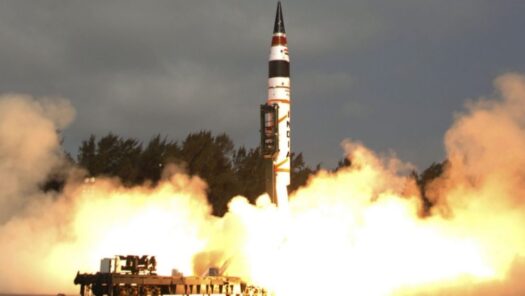Nuclear Weapons
Return to article
نام میں کیا رکھا ہے؟ جنوبی اشیا کے میزائلوں کے ناموں کی اشتقاقیات
زبان نہ صرف ذریعۂ ابلاغ کا کام دیتی ہے بلکہ سامعین پر ایک اہم سائکو لینگوسٹیک (زبان دانی سے متعلقہ نفسیاتی )اثر بھی ڈالتی ہے۔ الفاظ کا مخصوص انتخاب کسی بھی امر کی اہمیت کو زیادہ یا کم کرسکتا ہے اور غیر محسوس انداز…

Once Again, Concerns Arise About China-Pakistan WMD Nexus
A few days ago, an Indian news agency, Press Trust of India (PTI), reported that Indian security agencies had intercepted a ship that was bound for Karachi from China at Mumbai’s Nhava Sheva Port. The ship was stopped because it…

What’s In A Name? The Etymology of South Asia’s Missiles
Language not only serves as a means of communication but also exerts a significant psycholinguistic impact on listeners. Specific choices of words can intensify or diminish the importance of any issue and shape perspectives passively. The nomenclature of South Asia's…

جنوبی ایشیا کی نیوکلیئرائزیشن سے سیکھ : جنوبی کوریا کے لئے اسباق
یہ مضمون ہنری ایل اسٹیمسن سینٹر کی اشاعت ۳۸نارتھ کے ساتھ ایک سیریز کے ایک حصے کے طور پر مشترکہ طور پر شائع کیا گیا ۔ رواں سال کے اوائل میں جنوبی کوریا کے صدر یون سک یول نے کہا…

جزیرہ نما کوریا میں غیرروایتی (سب کنونشنل) استحکام: جنوبی ایشیا سے (حاصل کردہ) اسباق
یہ مضمون ہنری ایل اسٹیمسن سینٹر کی اشاعت ۳۸ نارتھ کے ساتھ ایک سیریز کے ایک حصے کے طور پر مشترکہ طور پر شائع کیا گیا ۔ شمالی کوریا کے بڑھتے ہوئے جوہری خدشات، جنوبی کوریا اور امریکی پالیسی سازوں…

South Korea as a Nuclear State: Trade-offs and Choices
This piece was co-published as a part of a series with 38 North, a publication of the Henry L. Stimson Center. South Korea’s launch of its Indo-Pacific strategy in December 2022 started the country’s ascent into “strategic clarity” for the U.S.-led…